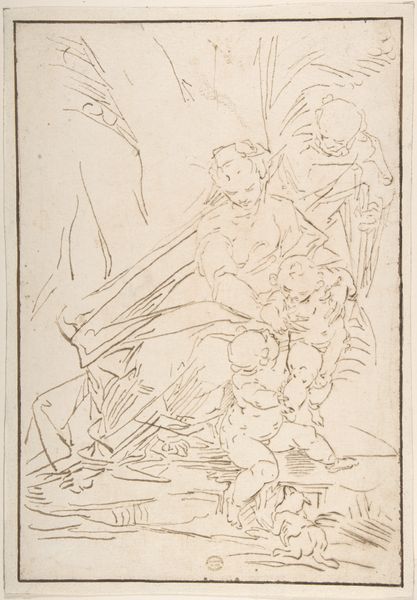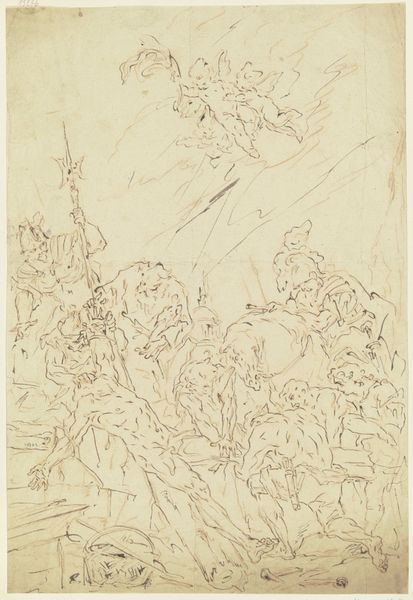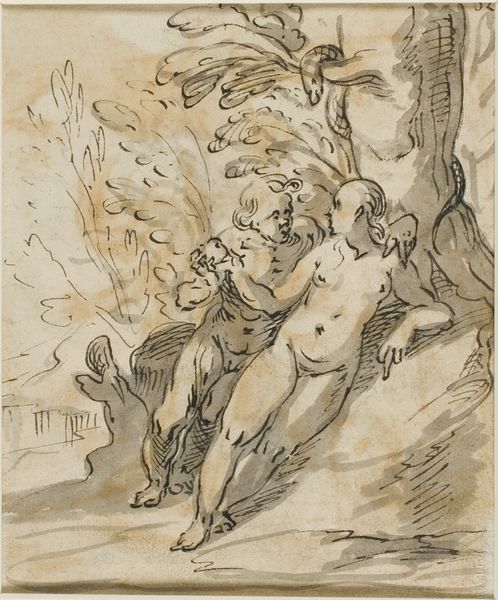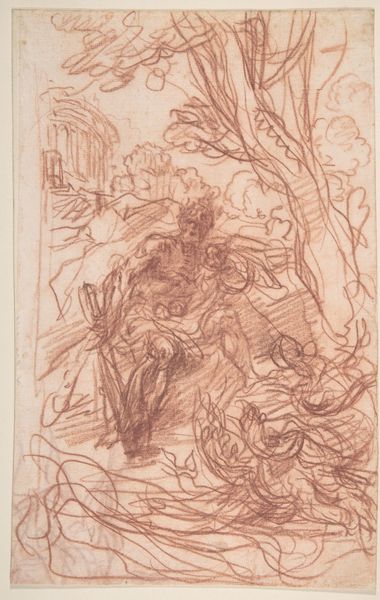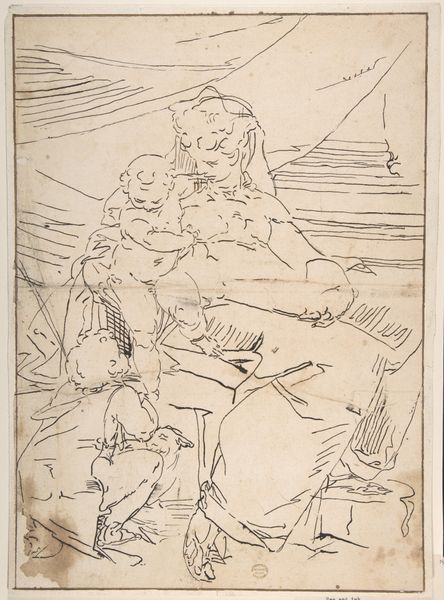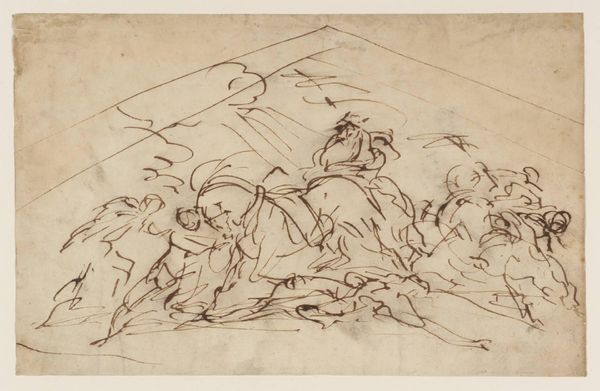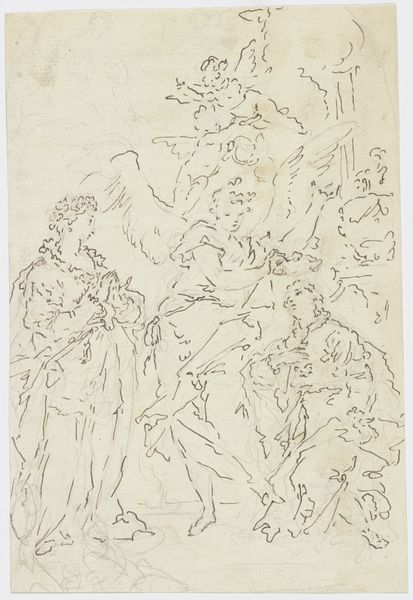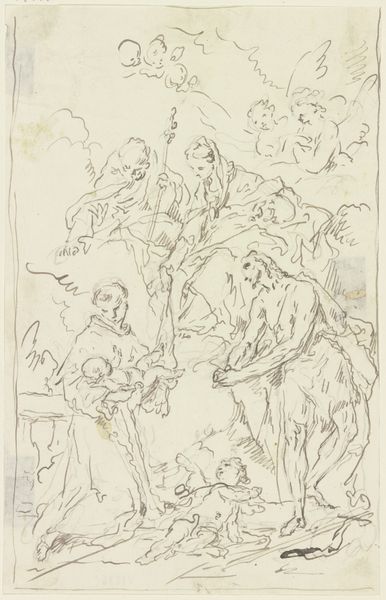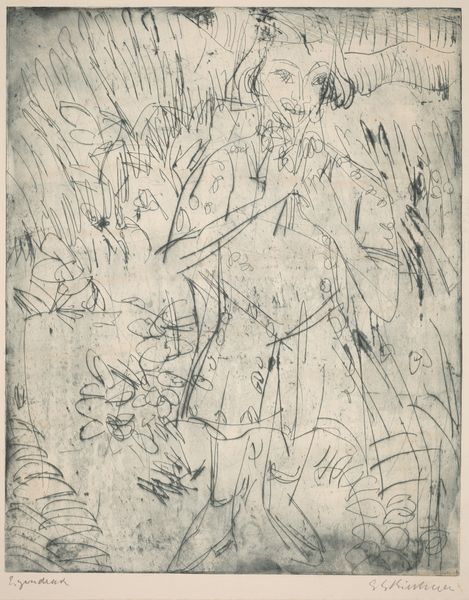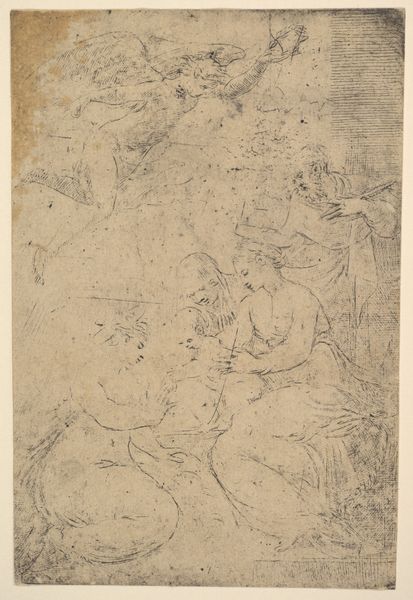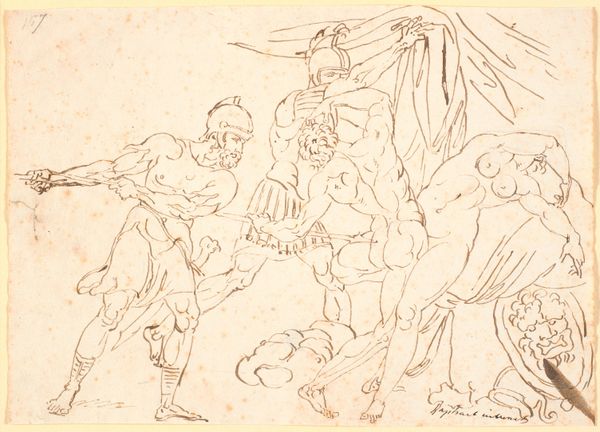
drawing, ink, pen
#
portrait
#
drawing
#
high-renaissance
#
ink drawing
#
etching
#
figuration
#
ink
#
pen
#
italian-renaissance
Copyright: Public Domain
Editor: This drawing, "Die Heilige Familie mit dem Johannesknaben" by Luca Cambiaso, seems to depict the Holy Family with Saint John the Baptist. It’s created with pen and ink, and I'm struck by the sketch-like quality, almost like a study. What do you see when you look at this piece? Curator: As a materialist, my attention is drawn to Cambiaso’s *process*. The loose ink lines, the visible labor... it speaks to the rapid method he employed. The sheer *quantity* of drawings Cambiaso produced suggests a workshop context, doesn't it? The materiality here– the affordable and easily accessible pen and ink – signals a democratization of art production, compared to say, fresco. How does the accessibility of the materials change our understanding of "high" art in this context? Editor: That's a fascinating point. So, the use of pen and ink implies a different mode of production compared to the grander scale of other Renaissance works. Are you suggesting it challenges the conventional understanding of Renaissance artistic labor? Curator: Precisely. We must also ask, who was the intended consumer? Was it another artist studying form? A patron seeking a preliminary design? Considering its potential function helps us understand Cambiaso’s decisions about materials and level of finish. It’s not about some ethereal ‘genius,’ but the material reality of making art for a purpose within a specific market. Editor: I see! Thinking about the material conditions and the social context really opens up a whole new way of understanding the piece, beyond just the subject matter or aesthetic value. Thank you. Curator: Indeed. It reminds us that art is fundamentally about production and consumption, not just divine inspiration.
Comments
No comments
Be the first to comment and join the conversation on the ultimate creative platform.

